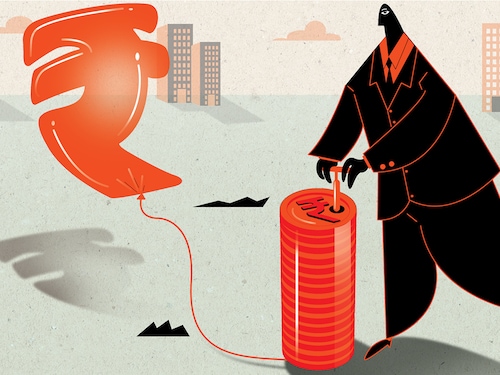Why targeting headline inflation is essential to control inflationary expectatio
When one looks at policy targeting, it has to be headline inflation as it drives decisions on savings and investment


The credit policy targets headline inflation, which is the practice in almost all countries. The Monetary Policy Committee (MPC) also targets the same in India as this has been the mandate from the start and not changed when it was reviewed after running for the first term. However, each time the policy is announced, there is the economist’s debate on why core inflation should be targeted as, in the last year or so, it has run lower than headline inflation. The reason is that, last year, food inflation was high, which increased headline inflation while core inflation was relatively low.
An ideological issue is whether policy should narrowly focus on core inflation, which is theoretically what can be targeted by monetary policy. The logic here is that food prices cannot be influenced by policy. There can be no argument here as prices of pulses or cereals are not dependent on interest rates but supplies. Therefore, core inflation makes more sense. Or so goes the argument.
The argument here is that monetary policy deals with the entire economy and not just the ‘core inflation’ sectors. Policy is to impact inflationary expectations and adjust the real interest rate accordingly. After all, the rate influences not just lending but also savings and, hence, cannot ignore the broader macros. Therefore, the headline inflation number should be under focus.
Now let us look at how inflation has behaved in the last 15 years or so since the CPI index was instituted. The average headline inflation has been 5.8 percent since 2012-13. In the last 10 years, which is roughly when the MPC was actioned, it was 5 percent. And in the last five years, it was 5.7 percent. The corresponding numbers for core inflation were 5.6 percent, 5 percent and 5.2 percent. Therefore, we can see convergence of the two series inflation averages. The differences are mainly due to the food segment, which kept the headline numbers higher in general. Hence, if one went by pure numbers, the rate action should have largely been unaffected on almost all occasions, though monthly trends could have led to different outcomes. Quite surely, the MPC would have looked at these trends when coming to a decision.
Also read: Inflation Rate in India 2025: A closer look at economic trends
An issue which comes up here is that if the core inflation argument is based on the premise that interest rates do not affect food prices, does this hold for core inflation at the theoretical level? Clothing and footwear (weight of 6.5 percent) is rarely financed by loans, though credit cards are used. Normally, purchases are based on need, which can be a festival where interest rates may not matter.
The same holds for, say, housing rent (10 percent), household goods (3.8 percent) which is rarely based on leverage. This can also be said about education (4.5 percent), personal care (3.9 percent), health (5.9 percent), recreation (1.7 percent). A part of transport inflation (1.3 percent) may be affected by policy, though prices are rarely affected by demand conditions.

Therefore, when one looks at policy targeting, it has to be headline inflation as this is what drives decisions on savings as well as investment. The repo rate has to be aligned with real interest objectives, which may not be overtly stated. Just like it is said that some minimum inflation is needed for industry to produce, as there has to be profit made, the same holds for savers where there needs to be an incentive. Further, even industry looks at both interest rates and inflation when taking decisions. Foreign funds look at comparable real interest rates when taking a decision to invest. High inflation economies can be a deterrent, especially if monetary policy is not aligned. Last, targeting headline inflation is essential to control inflationary expectations.
Based on these arguments, it stands to reason that monetary policy should continue targeting headline inflation. Should it target wholesale price inflation instead, where manufacturing has a higher weight and so does core products? This can be a different discussion as the WPI (wholesale price index) is more susceptible to excess demand forces, which can be influenced by interest rate policy. But this is not the mandate of the MPC, which looks logical, too, for two reasons. The first is that the WPI is incomplete as it excludes services. The second is that it does not represent the major segment of the economy: The consumer.
Hence, the present practice of targeting CPI headline is appropriate. It can be argued which number it should be and whether 4 percent or the band is appropriate. But, quite certainly, the argument for targeting core inflation is not convincing. As a consolation, for those who favour core inflation targeting, as pointed out in the beginning, there has been a tendency to converge with the headline numbers and would, hence, not have changed the outcomes.
The author is chief economist, Bank of Baroda, and author of Corporate Quirks: The darker side of the sun
First Published: Sep 09, 2025, 16:13
Subscribe Now